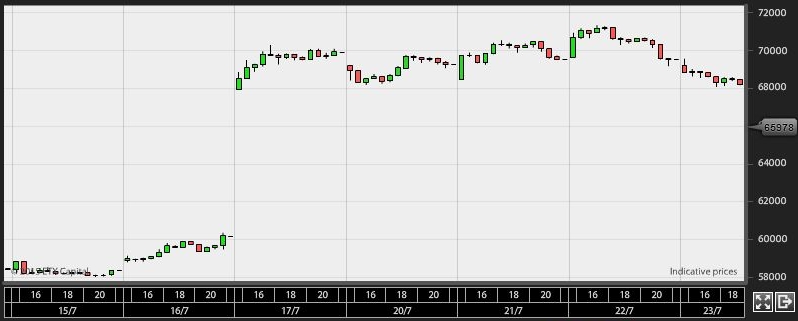Normally, liquid stock prices appear continuous and smooth because sellers and buyers are constantly in line to bid at the current price. But occasionally, a phenomenon occurs in the stock price where the price ‘jumps’ so much up or down that a break in the graph occurs, where the new price is completely cut off from the preceding price. This typically happens in connection with a strong uptrend or downtrend, which is suddenly intensified by news in the direction of the trend. In that situation, the buyers or sellers completely take over, and a ‘gap’ in the price occurs.
| Try our free forex signal service via Messenger: Click here |
Day traders refer to such a hole as a ‘gap’. One can find ‘gaps’ every single day by comparing the closing price of a given stock with the next day’s opening price. This is because the price of the stock has been adjusted during the exchange’s closing time, as news obviously also comes out during that period. Gaps in the middle of a trading day are much rarer.

There are many strategies for trading simple gaps, but in this article, we will deal with a particular gap, known as the ‘island gap’, which can be traded using a strategy called ‘island reversal’.
An ‘island gap’ occurs when a gap up or down in the price chart is followed by a corresponding gap in the opposite direction (typically within a few days). This creates an island in the middle of the price chart, where a piece of the chart is completely cut off from the rest. Island gaps are interesting because they represent the sudden sense of panic or excitement in the market when the first gap occurred has now completely disappeared. Instead, the sentiment reverses, and often a trend in the opposite direction will emerge and continue for some time.
As a day trader, you can exploit this particular situation in the market by following the flow up or down. To do this, you can place a buy or sell order (depending on whether the gap closes up or down) immediately after the gap is filled. Often it’s hard to know if an island will occur, so the results-oriented trader can place an order in the area and wait to see if it happens. However, one must closely monitor their order, as often the price will just quietly and evenly close the first gap, and therefore no ‘island’ occurs. In these cases, it’s not necessarily a solid trade.
